
Guest blogged by Tarnjit Kaur
This essay was written as an introduction to ‘Sikhism and Gender Equality: Where do you See Yourself?,’ an event to be held in Ontario Saturday, April 2nd at 6 pm. All are welcome to attend.
Motivated by the empowering message of Sikh theology, Sikhi, Sikh history is replete with struggles against all forms of oppression, to protect religious freedoms, human rights and in the pursuit of self-determination. Although an expression often confined to an interpretation of Christianity, I have always thought of Sikh theology as a form of liberation theology: a theology that liberates in the here and now from social, political and economic injustices. It is from this perspective that I ask whether if a Sikh thealogy [1], that is a Sikh feminist theology, has political and social utility in advancing the cause for gender equality within the Sikh communities [2].
I argue that women’s oppression due to patriarchy is compounded by colonial factors and that the disconnect between the practise and theory of Sikhi is entrenched in socio-economic and political inequities. It is therefore seriously questionable whether there is any political utility in the efforts to reclaim the ”feminine voice” or the feminist nature of Sikh scripture as subscribed by Sikh thealogy [3]. I further ask how can gender equality be achieved? Does Sikhi empower women because of its emphasis on traditional gender roles and femininity? Or does Sikhi advocate that men should no longer exploit their own privilege arising from their status as men? Or are there clear messages of gender egalitarianism promoting gender equality? These are areas of Sikh thealogy that are pregnant for research, scriptural analysis and historical investigation and are part of a larger on-going work both within the academic sphere and by grass-roots Sikh organizations.
Conversations about hair are often emotional for Sikhs – and therefore they are conversations which we tend to avoid. For many Sikhs, it is a constant struggle to explain the historical significance of keeping our hair and/or wearing a turban while other Sikhs will argue that simply keeping your hair or wearing a turban by no means makes you a good Sikh. While that may be true, being able to have conversations about hair is an incredibly important and necessary dialogue for us to participate in. Many Sikhs in the diaspora have struggled to maintain their identity, while Sikhs in Panjab are struggling to be western. It’s such an interesting juxtaposition and anybody who has visited Panjab recently will see the dwindling number of Sikh boys choosing to wear turbans. In an effort to explore this issue, a fascinating documentary film – Roots of Love – by award winning filmmaker Harjant Gill is being released this Spring.
Told through the stories of six different men ranging in age from fourteen to eighty-six, Roots of Love documents the changing significance of hair and the turban among Sikhs in India. We see younger Sikh men abandoning their hair and turban to follow the current fashion trends, while the older generation struggles to retain the visible symbols of their religious identity. The choice of cutting one’s hair is one that not only concerns the individual and his family, but an entire community. [link]
I was given the opportunity to watch the entire documentary – I highly recommend the film and was drawn to its excellent cinematography. You can watch the trailer below and after the jump, read my interview with Director, Harjant Gill. Then, think about how hair plays a significant role in your life, if at all?
If you haven’t heard yet, March 14th, the First of the month of Chet in the Nanakshahi Calendar is being commemorated by Sikhs across six continents as ‘Sikh Vatavaran Diwas,’ or Sikh Environment Day.
Following an official statement from the Akal Takht, this week over 250 Gurdwaras, schools, and Sikh organizations around the world, along with Takht Sri Kesgarh Sahib and Takht Sri Hazur Sahib, will focus kirtan and katha on ‘kudrat’, host tree plantings, clean ups, nagar kirtans, children’s art displays, and Khalsa school lessons on the theme of the environment.
Here’s a video taken of the British Columbia sangat during an entire weekend of successful events organized by the Sikh Green Team, in conjunction with the Guru Nanak Sikh Gurdwara and Sukh Sagar Gurdwara Sahib. Sarya Nu Sri Guru Har Rai Sahib Ji de Gurgaddi Diwas Di Lakh Lakh Vadhaiyan Hove!

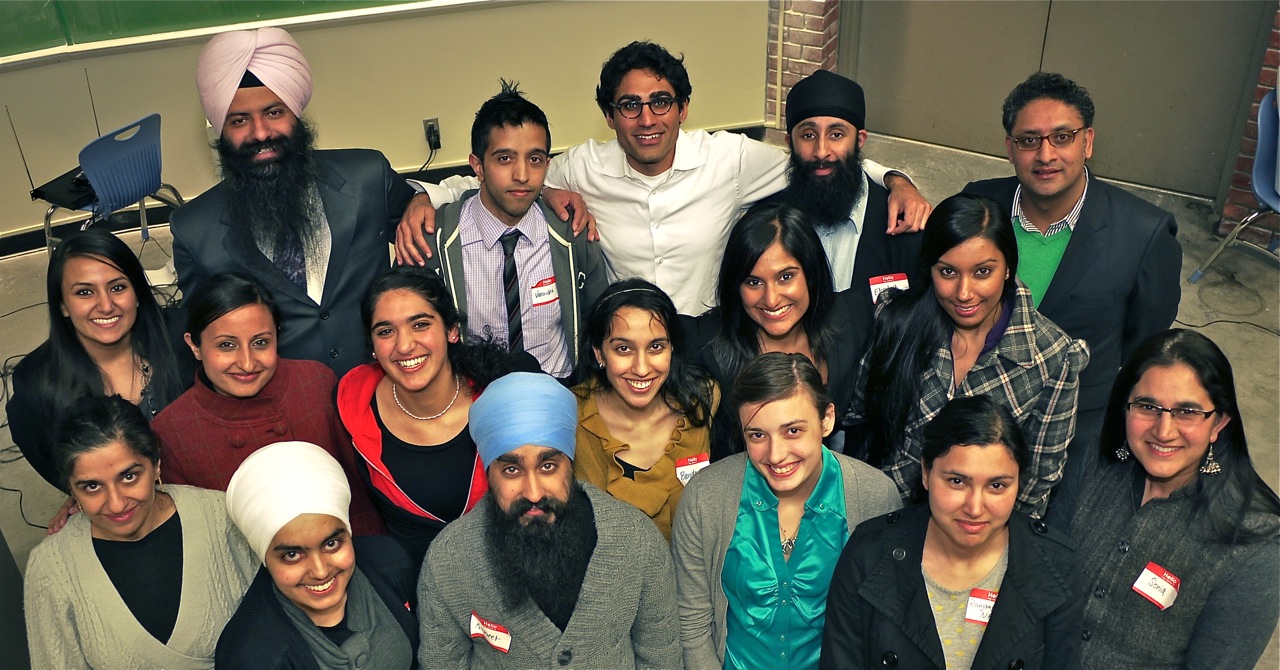
My apologies for a post that is far overdue. So Sikholars 2011 came and went. This year was an even greater success than last year with attendance of over 110+ and a growing number of presenters. This year’s Sikholars 2011 class – Kamal Arora, Amneet Singh Bali, Sonia Dhami, Amandeep Kaur Dhillon, Neelamjit Singh Dhillon, Sandeep Singh Dhillon, Roopan Kaur Gill, Gurbachan Singh Jandu, Tarnjit Kaur Johal, Varinder Singh Johal, Simran Kaur, Sujot Kaur, Tavleen Kaur, Semran Kaur Mann, Ranjanpreet Kaur Nagra, Neilinder Singh Ranu, Sharanjit Kaur Sandhra, and Elizabeth Weigler – was our best yet and we look forward to incoming Sikholars classes.
The event was made possible by the CSU East Bay Ethnic Studies Department, the Sabharwal Sikh and Punjabi Studies Chair, the CSU East Bay Sikh Students Association, the Jakara Movement, and the scores of volunteers.
Below the fold, as promised are uploaded copies of some of the papers (we did not receive permission from all the Sikholars to upload their papers due to ongoing research, publication in academic journals, etc.). These papers will be made available for one month as per our goal of greater democratization of research.
We look forward to Sikholars 2012
The Sacramento Bee is reporting that two elderly Sikh men were shot while going on an afternoon walk in their suburban neighborhood on Friday. One of the men, 67-year-old Surinder Singh died from the attack on Friday, and 78-year-old Gurmej Atwal is in critical condition, suffering from two gunshot wounds in his chest. The Bee article states:
Relatives and friends in the tightknit Sikh community to which the two men belong were not as hesitant to call the shooting a hate crime.
Singh and Atwal, like many Sikh men, had thick beards and wore turbans – traditions that have made Sikhs the target of bigotry and violent attacks since the Sept. 11, 2001, terrorist attacks.
“The turban is a big problem for us,” said Gurjatinder Singh Randhawa, chief editor of the Sikh newspaper Punjab Mail USA. “We look the same as Afghan Taliban – but we are not Taliban.”
Randhawa recalled the beating of a Sikh cab driver four months ago in West Sacramento.
The driver told authorities that two passengers had uttered anti-Islamic slurs as they attacked him and then beat a female passenger who tried to stop them. Police have since arrested two men on charges of felony assault with a deadly weapon and commission of a hate crime in connection with the attack.
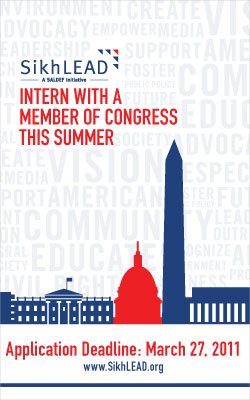 The Sikh American Legal Defense and Education Fund (SALDEF) has announced the Congressional Internship Program (CIP) as part oftheir new initiative called SikhLEAD. The objective of SikhLEAD is to inspire, train, and support motivated and enterprising young Sikh American leaders as they prepare for a lifetime of community engagement and community leadership. The CIP is the first effort under this new and dynamic initiative.
The Sikh American Legal Defense and Education Fund (SALDEF) has announced the Congressional Internship Program (CIP) as part oftheir new initiative called SikhLEAD. The objective of SikhLEAD is to inspire, train, and support motivated and enterprising young Sikh American leaders as they prepare for a lifetime of community engagement and community leadership. The CIP is the first effort under this new and dynamic initiative.
SALDEF’s CIP partners with congressional offices to place Sikh American college students in internship positions on Capitol Hill with members of Congress. Through this program, students will be afforded first-hand perspective into the functioning of the federal government, as a way of providing experience-based training to individuals interested in civic engagement and government affairs.
Through the experience of interning in a congressional office, interns will:
- • explore a potential career track
- • create a network of professional and personal contacts
- • develop real-world skills
- • build confidence and professional work habits
The application deadline for summer 2011 internships is March 27th, 2011!
Visit www.sikhlead.org for more details and to apply. Spread the word and tell your friends about this exciting opportunity.
Last month our friends over at Sepia Mutiny posted an interview with Montreal-based hip hop producer Sikh Knowledge, which I think many TLH readers will find of interest. Sikh Knowledge aka Kanwar Anit Singh Saini has worked with many favorite Sikh hip hop artists including Humble the Poet, Mandeep Sethi, and Hoodini and breaks stereotypes right and left as he carves out his own path.
[W]hat really made an impression on me was Sikh Knowledge’s confidence in pursuing his life. At the age of 20, he decided to stop being what other people wanted him to be, dropped out of engineering school and re-started honestly. “I dropped out, came out, and rearranged my whole life,” he stated. “I reapplied and did my undergraduate degree in music with a minor in linguistics. It was the happiest time of my life. I felt good about the decisions that I made.” He’s currently pursuing his Master degree in speech language pathology while having the dual career of mixing some of the ill-est beats in North America.
You read right, Sikh Knowledge is an out and gay hip hop tattooed turban wearing artist. “I’ve definitely lost friends along the way,” he said. “Working relationships have gone sour. But at the end of the day, those artists that choose to work with me… not because of how I can brag, but because of what I do. They’re working with an underdog. That just proves to me that I’ve got something to offer.”
“As an out hip hop, dancehall artist,” he continued. “…people hear the music first and then they reach out to me and we make tracks. Subsequent to that if they find out if I’m gay, my philosophy is that’s their problem. It’s not something I wear on my sleeve but I don’t hide it either.”

Like many Sikhs, I grew up eating meat. It was something I never really questioned until I was in college and started learning more about the treatment of animals on factory farms and the environmental impact of the meat industry.
But growing up I never thought about where my spicy deep-fried chicken strips were coming from. Or the living (and dying) conditions of the cow that made up the thinly sliced pieces of meat in my Arby’s roast beef sandwich. As long is it wasn’t halal, it was all good.
I never understood what halal truly meant, but the message I got from my parents and others in the community went something like this: Halal is the way Muslims slaughter animals, and it involves killing the animal slowly and painfully. And lots of gushing blood. We Sikhs don’t believe in torturing animals, so we don’t eat halal meat. Sound like a familiar story line?
This, of course, contributed to my perception of Muslims as barbaric people who were dirty, had multiple wives and questionable morals, and killed my ancestors during partition. In the context of the messages I received from family and community growing up, the story about halal fit right in – yet another way Muslims are backwards.
As is abundantly clear in my writing on this blog, this is in stark contrast to how I see Islam and the Muslim community at this point in my life. But I grew up with these messages and stereotypes just like most of my Sikh peers did.
Really, what’s all the fuss about halal? Why aren’t Sikhs supposed to eat halal meat?
Since the Green Revolution was introduced in the mid-1960s, the Sikh spiritual homeland of Punjab has been faced with mounting soil erosion, water table decline, widespread chemical contamination, and continued loss of biodiversity in agriculture and forests. The Cold War era anti-revolutionary plan transformed Punjab into the breadbasket of the Indian nation state but left Punjab’s ecology in a critical state and set the agricultural economy on a path of long-term decline. Without Sikh institutions on board with the ecological reality of Punjab, the serious degeneration of the environment will continue to accelerate, and the marginalized and the poor will burden the costs of shortsighted statist policies that have exploited the natural resources of Punjab.
The week of March 14, the Gurpurab of Guru Har Rai Ji, Gurudwaras across Punjab and the Diaspora will participate in the first ever global day of reflection on the environment to reach the masses in Punjab and the world. On ‘Sikh Environment Day’ Gurdwaras across the world will focus kirtan and katha on the environment, participate in tree plantings, install environmental notice boards, start pesticide-free vegetable gardens, and host Khalsa School lessons on the environment. The SGPC, DSGPC, AGPC, are all in support of this day and celebrations will be underway at Anandpur Sahib (‘pani bachao, rukh lagao!’). We have prepared a Gurdwara Guide and shabad compilation for participating Gurudwaras and the Sikh Research Institute has also created Sikh environmental education lesson for Khalsa Schools across the diaspora.
Major outreach efforts are underway across the world, but WE NEED YOU to invite your Gurudwaras to join Sikhs across the world. Please take ten minutes of your day, ‘like’ EcoSikh on facebook, download an English or Punjabi versions of our invitations, pass them on to your Gurudwara heads, and encourage your Gurudwara to REGISTER today. We can make this happen for the future generations and create a shift in thinking on the serious degradation of Punjab’s rural and urban ecology before the process becomes irreversible.
Please visit www.ecosikh.org to learn more about Sikhism’s contribution to a sustainable future. May the Khalsa ever remain spiritually exalted, and always in service of humanity.
Visit the Sikholars website and choose to register for the entire weekend or just for the conference. There are a number of exciting presentations by leading scholars in the community. Mark down your calendars from February 25-27, 2011 as Sikh professionals, academics, and activists come together in the Bay Area. Hope some of our Langar-ites can also attend!
Malcom X once designated the term ‘house negro’ to describe the African American slaves that were unwilling to leave their marginally comfortable lives subjugated by their white slave owners and very likely to support the oppressive system of slavery. These ‘house negros’ continued to exist throughout history helping perpetuate atrocities against their fellow African Americans, conspiring to no end to keep oppressive systems in place. Nowadays, we have a house Negro as a president, and in Canada, we have house Sikhs.
The last few years have been vital for the right wing in Canada. Canada has taken an unprecedented role in the international stage in upholding oppressive regimes and systems and continuing its role in the war on terror and the war in Afghanistan. Two wars which have produced over a million dead bodies, tens of millions more displaced and dispossessed, and countless lives traumatized. But we all know this; we all have been witness to the horrors of these wars and there’s no need to continue on exploring their horrors, but what is important is to see where our own Sikh leaders have been while millions of innocent lives were destroyed. What we find, surprisingly, is a lack of concern or at the extreme, complicity and support.
Being a Canadian and being sensitive to our communities suffering and that of other communities, I find myself pitted against a majority that is suffering from apathy. I see a Panjabi, Sikh community consistently disenfranchised from Canadian polity yet being consistently utilized as a major voting bank by exploitative politicians who invest in our communities apathetic and introverted nature. They see a community willing to throw support to any tom, dick and harry that greets them with a ‘sat-sri-akal’ and a half assed smile and we all too willingly welcome them in our homes and institutions. This is a narrative we find almost universally everywhere and though it does not necessarily imply a problem relative to only our community, it is a systemic problem that has to be recognized and corrected. But even with these corrective measures, we, in Canada, have begun to see these ‘house Sikhs’ prop up and this is going to be a struggle onto itself.
Kicked off by Tunisia’s Jasmine Revolution last month, the massive uprisings against U.S.-backed authoritarian regimes throughout the Arab world have grown into an undeniable and unprecedented force for real democracy.
democracy.
Since the dictators being targeted have close ties to Washington, the leaders of our government are finding themselves in a rather uncomfortable position. Senator John McCain was a little more blunt than the Obama adminstration when, on Fox News last week, he called the rise of democratic movements a “virus…spreading throughout the Middle East,” referring to this as “the most dangerous period of history…of our entire involvement in the Middle East, at least in modern times.” Obama and Clinton talk a smoother, more diplomatic talk, but the take home message is the same: “Change” in the Middle East must be on our terms.
In a column in the Guardian on Friday, Noam Chomsky wrote, “Washington and its allies keep to the well-established principle that democracy is acceptable only insofar as it conforms to strategic and economic objectives: fine in enemy territory (up to a point), but not in our backyard, please, unless properly tamed.”
Indeed, while the Obama administration pays lip service to supporting “democracy” in Egypt (after backing and funding Mubarak for the last 30 years), it has lined up long-time Mubarak aide Omar Suleiman to lead the so-called transition to a new government. The New Yorker reported that Suleiman “has served for years as the main conduit between the United States and Mubarak… [H]e was the C.I.A.’s point man in Egypt for renditions—the covert program in which the C.I.A. snatched terror suspects from around the world and returned them to Egypt and elsewhere for interrogation, often under brutal circumstances.”
That’s democracy for you, American style.
For Sikhs in the United States today, what does it mean for us to pay taxes to a government that actively works against the freedom, self-determination, and sovereignty of millions of people around the world, including our brothers and sisters in Egypt whose relentless protests have been met with violent, state-sponsored repression?
This is of course a question that I would ask all citizens of the United States, but for us Sikhs, I don’t think it is simply a political question, but also spiritual one.
Yes, I am going to indulge in imposing what I believe our priorities are onto those of you reading this. Our priorities should be where the ground touches our feet and not the vast mansions seating established masands who rake in millions and output redundant declarations commemorating our great history year in and year out.
I’ve seen it happen all across the world. I’ve seen individuals and organizations scrambling to raise moneys for the poor widows in Delhi who need justice and security. I then went on to see that those widows still anguished within a glimmer of hope. Exploited, used and molested by westerners, that glimmer of hope will soon fade. Those widows will die, their children already disenfranchised from Sikhi and thrown into the wallows misery, poverty and drug addiction are turning to Christian missionaries for support. All the while, our masands erect massive, superfluous houses to promote Sikhi and create focal points for Sikhs to congregate. Because, that is what should attract Sikhs: massive Gurdwaras and not the love of our Gurus or our need to lay our heads on their laps.
Watching protests erupt all over the Middle East and North Africa gave me hope; if these seemingly apathetic peoples can rise against heavily oppressive systems of governance then we, too, can rise against this unjust use of finances and take our community back and direct it toward a path of Sarbhat da Bhalla.
These are some of the Gurdwaras in question:


A report from the BBC:
http://www.bbc.co.uk/news/11818769
Book your flight, complete your registration, and plan on attending Sikholars 2011 now. This wonderful event will be held at CSU East Bay (Hayward, CA) from February 25-27, 2011. Having attended last year, I can say that this is one of the few forums in the community to engage in critical thought, intellectual stimulation, and meet other like-minded people in the community. The event is geared towards Sikhs, ages 25+.
In addition, this year there will be a number of evening dinners, mixers, and functions to allow young Sikhs to network and make important connections. I will definitely be in attendance and hope many of our TLH readers will be too. Visit the Sikholars website and REGISTER NOW as I have been told there is limited seating and they will fill up (especially by Canadians!).
Guest blogged by Navdeep Singh Dhillon
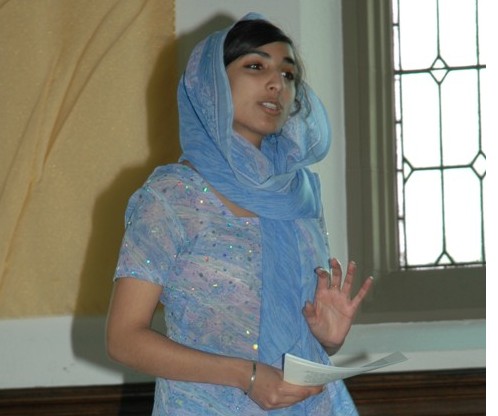 For my first post as a guest blogger, I wanted to address an issue that has been irritating me since September, when I first read about it. [An anonymous] Mehmaan wrote a post titled “Valarie Kaur, the peddler of self-promotion.” Mehmaan’s claim is essentially that Valarie Kaur is a big pakhandi.
For my first post as a guest blogger, I wanted to address an issue that has been irritating me since September, when I first read about it. [An anonymous] Mehmaan wrote a post titled “Valarie Kaur, the peddler of self-promotion.” Mehmaan’s claim is essentially that Valarie Kaur is a big pakhandi.
Mehmaan’s singular criterion for reaching the conclusion that Valarie Kaur is not just a pakhandi, but a big pakhandi, is that she is using social media and her website to promote herself as a speaker and to sell her documentary, “Divided We Fall,” inaccurately called a “movie” in the post.
I have never met Valarie and don’t know her family, but do want to clarify Valarie Kaur’s achievement, relegated to the realm of frivolity with the express purpose of making money, by Mehmaan in order to prove a point.
On September 11, the mood against anyone brown, especially Sikhs, changed drastically, and it culminated with the murder of Balbir Singh Sodhi on September 15. At that time, there was no Twitter. There was no Facebook. Even text messaging wasn’t normal everyday behavior. So there was no immediacy with information. I remember receiving emails through newsgroups I happened to be a part of documenting the steadily rising violence and blatant racism towards brown people. And then switching on my television to see zero updates on the “backlash.” Instead, it was just the same devastating image of planes crashing into the Twin Towers, followed by a turbaned and bearded Bin Laden. So what Valarie Kaur did at 20-years-old is nothing short of phenomenal. Along with her cousin, she went to document the brown experience on a cross-country trip, armed with plenty of panache, zero technical skills and a video camera. The fact is that there is no other documentary, which I am aware of, that weaves such a powerful narrative, intermingling a compelling personal story, and creating the link between not only Sikhs, but anyone of color, including the Japanese-American survivors of camps in the United States.
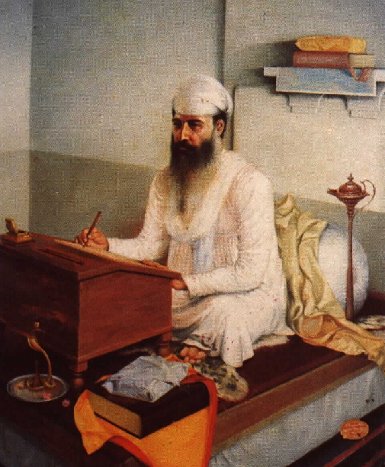 After the massively successful Sikholars 2010 conference in February of this year, graduate students will be congregating again next February for Sikholars 2011.
After the massively successful Sikholars 2010 conference in February of this year, graduate students will be congregating again next February for Sikholars 2011.
After speaking to organizers, I have been informed that the deadline for proposal submissions (due to massive requests as many students were taking finals) will be extended until December 31, 2010.
Visit the Sikholars website, check out pictures from last year, and most importantly make sure you are there at:
The Second Annual
Sikholars: Sikh Graduate Student Conference
A Community on the Move: Global and Local Sikhs
February 25-27, 2011
Continue below the fold for some general information about Sikholars.
We have previously written about SikhLens, an art and film festival which brings together Sikh filmmakers, authors, artists and actors. For those of you who support the development of Sikh arts, you will be pleased to know that the second annual Sikh Art and Film Festival (SAFF) will be held from November 19th-21st, 2010 at the Dodge College of Film and Media Arts at Chapman University in Orange, CA. SAFF provides a venue for artists to present their “Sikh-centric” films, art, and music to the broader community with the intent of showcasing their talents and generating increased Sikh awareness.
The Festival begins Friday, November 19th with a red-carpet Opening Night starting at 7:30 pm. A youth-focused cluster will start off the Saturday events. This cluster focuses on films and live book readings intended to incite interest and inspire youth, while teaching about Sikh history. The focus then turns to creative Sikhs in the Visual, Audio and Entertainment Industries. Hear their stories, watch and listen to their craft, and interact with and support Sikhs breaking ground in these unique areas. Also introducing for the first time an interactive segment on “Introduction to Film-making,”to demystify the film-making process. Rounding out the day’s events are a series of short films featuring a wide variety of genres, an eclectic mix of filmmakers, and a unique blend of topics, including special selections from the SikhNet Youth Online Film Festival. Sunday’s events start with an international flavor, with an emphasis on Sikh films and artists from all over the world. The concluding cluster of the festival will touch upon Social Issues within the Sikh Diaspora. This segment is aimed to bring upon a meaningful and insightful look into the surroundings of the Sikh Community today.
I am especially interested in this final cluster which brings together films addressing the social issues that inflict our community. We have spoken many times on this blog about how media and film are critical to dialoguing about important issues.
A new film, by Turbanology filmmaker Jay Singh-Sohal, discusses the presence of Sikhs in the World Wars. Sikhs at War is a free online educational short-film exploring one young person’s journey to discover the invaluable contribution made by his community during the First World War. This documentary has been made specifically with young people in mind. Educators can use the film as a resource to find out more about Sikhs who fought during both World Wars for Great Britain.
From their simple village life in the Panjab regions of modern day India and Pakistan, the Sikhs volunteered in their thousands to fight for Britain. During the Great War their numbers rose from 35,000 at the beginning of 1915 after the crisis in Europe turned into War, to more than 100,000 who were in active service by the time it ended in 1918.
The Sikhs formed 20% of the British Indian Army in action despite being only 2% of the population of India. They fought on all fronts in Europe, from Turkey and in Africa to the fields of Flanders. Their bravery is legendary – of the 22 Military Crosses awarded for conspicuous gallantry to Indians during the conflict 14 were rewarded to Sikh soldiers.
But for the thousands that left their homelands to join the fighting many did not return. During both the Great War (1914-18) and World War Two (1939-45) Sikh soldiers killed in action numbered 83,005 with 109,045 more wounded. One again despite being a minority in British India.
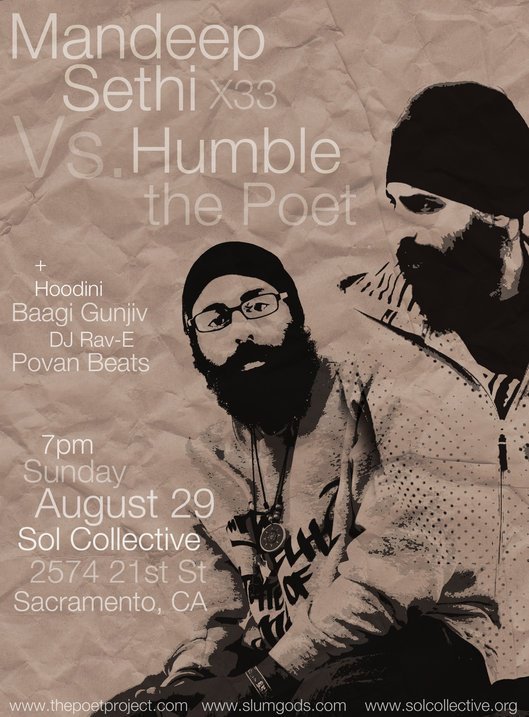 For those of you who will be in or around Northern California [actually, if you’re in or around North America you should come!] be sure to check out this upcoming event featuring Humble the Poet, Mandeep Sethi, Hoodini, Baagi Gunjiv, DJ Rav-E and more.
For those of you who will be in or around Northern California [actually, if you’re in or around North America you should come!] be sure to check out this upcoming event featuring Humble the Poet, Mandeep Sethi, Hoodini, Baagi Gunjiv, DJ Rav-E and more.
This is the first event of its kind in the U.S. (we usually are envious about these events when they happen in Canada!). The show will bring together these artists for, what promises to be, a legendary event.
::Slumgods.com Presents::
Humble the Poet VS Mandeep Sethi
::Live Beats::
::Special Guests::
Hoodini & KinG! + Baagi Gunjiv
::Gully Poetry by::
Sasa [Sick Spits]
::Holding Down the Cuts::
The event will be taking place on SUNDAY AUGUST 29TH from 7-11pm at Sol Collective/2574 21st St/Sacramento, CA 95818
Below the jump you can preview Mandeep Sethi and Hoodini&KinG!
The article below is a response to the growing [mis]representation of Sikhs in Canada. It’s an interesting article – let us know what you think.
—–
Reprinted from the Ottawa Citizen. Authored by Balpreet Singh.
As a Sikh Canadian, who was born in a Toronto suburb, roots for the Leafs, did law at the University of Ottawa, and works for a human rights organization, I’m astounded to hear claims from politicians that so-called “Sikh extremism” in on the rise.
If that’s the case, there’s no word of it among the more than 400,000 members of the Canadian Sikh community. The only thing we see on the rise is racism fuelled by these reckless comments.
As someone who wears the garb of his faith, I can tell you that the backlash we’re feeling is beginning to look like state-sanctioned vilification of Sikhs.
The evidence justifying this hate campaign is minimal. Most cite an offensive Facebook page attacking Vancouver MP Ujjal Dosanjh. I share his outrage and can understand his fear. Everyone knows Dosanjh’s personal history includes being beaten by thugs, and I sympathize with how that experience must have shaped his life.
But that doesn’t give him the right to turn Sikhs into the bogeyman. Or whip up hatred for a visible minority.
The other piece of Canadian evidence comes from 2007: a float in the Surrey, B.C. Vaisakhi parade displayed a picture of Talwinder Singh Parmar, who died in Indian police custody in 1992 and is widely believed to be one of the masterminds of the Air India bombing. What most people don’t know is that Parmar’s handful of supporters call him a martyr because they believe he is wrongly accused in the Air India tragedy. Some people, particularly of past generations, can’t believe anyone connected with the faith could be involved in a mass murder.
That makes them naive, not radical.




